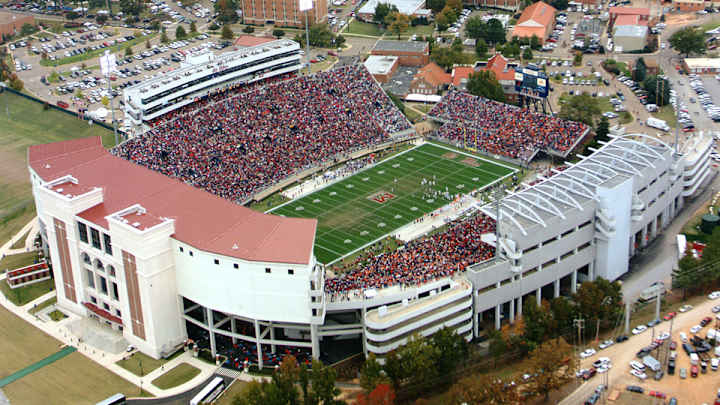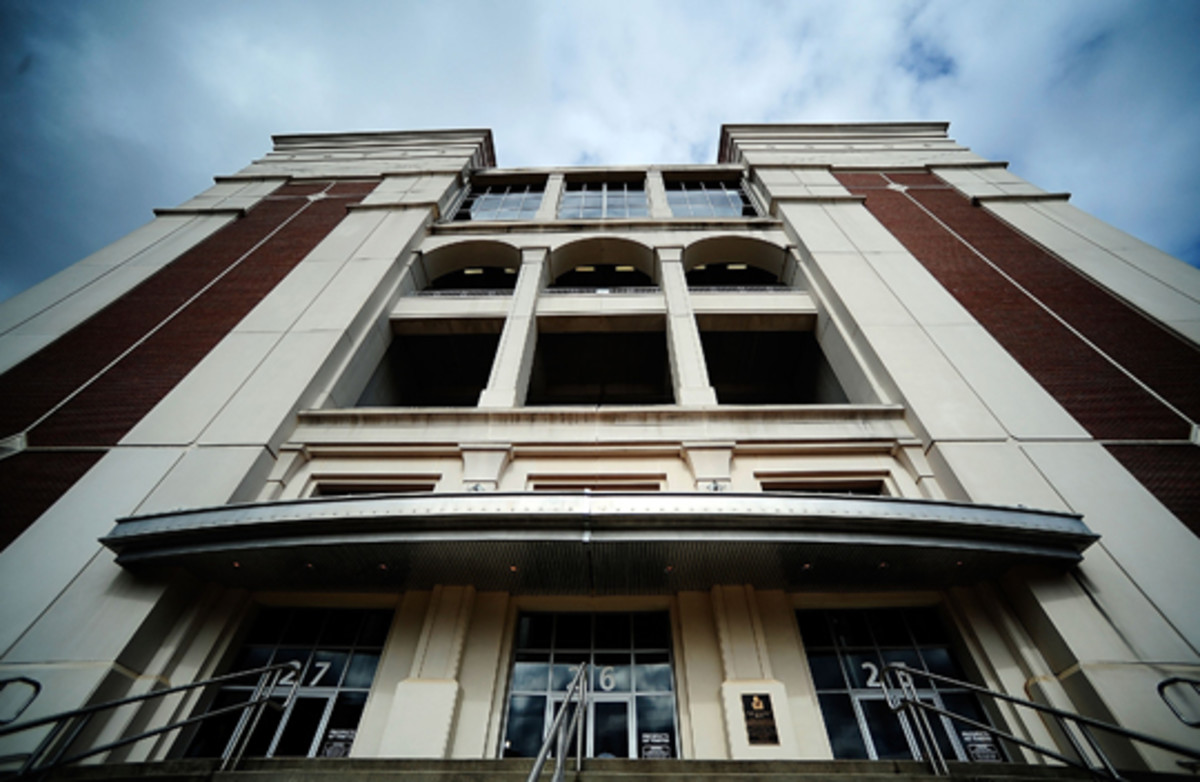Stadium Spotlight: Bringing The Grove into Vaught-Hemingway Stadium

Ten acres of oak-lined grass completely overshadow a hulking football stadium at Ole Miss. But that’s just the way of tradition for The Grove and nearby Vaught-Hemingway Stadium. Now stadium renovation plans aim to more intricately link the two integral parts of the Rebels’ game day experience.
As part of a current renovation to Vaught-Hemingway, celebrating the Walk of Champions from The Grove to the stadium will gain distinct fanfare. An entirely new north expansion will create an entry sequence -- and new exterior plaza -- for both the team and fans arriving from The Grove about two hours before game time.
“Where it has been happenstance, what we are trying to do is give it some more ceremony,” says Christopher Mitchell, the AECOM architect designing the renovation. “We are trying to mark the path in a more deliberate way.”
• ELLIS: Ole Miss' "Jack Boys" ready for challenge of Auburn offense
The Walk of Champions will soon include pylons and graphic elements all the way to a the north plaza under the base of the scoreboard at the entry point into the stadium. “We are trying to recreate that celebration that happens in The Grove and allowing for some of that to happen in the plaza space as well,” he says. “The goal is that on game day an extension of that same pregame activity (stretches) all the way to the north side of the stadium.”

Originally built in 1915 with 24,000 seats, the now-60,500-seat stadium didn’t have a ton of in-venue iconography to build on when Mitchell arrived to design the renovation. But building on the traditions spilling north in The Grove wasn’t a problem.
“We can take our cues from (The Grove) activity, and it really sets up and tells us what we need to do to extend that,” Mitchell says.
And that carries into the stadium.
The new design -- parts will get completed in time for 2015 and other sections will finish by 2016 -- will allow football players to continue their 300-foot march through the stadium’s entry gate into an entirely new concourse that spills onto the field and then across the field past a new south-end fan zone. Whether in the lower-level concourse or the 800-seat field-level club suite directly behind the south goalpost, fans can continue to line the path of the players.
“There is so much more attention these days to putting the fan closer to the working action on the field and off the field,” Mitchell says. “The new club is adjacent to where the team comes in and out during the game.”
• STAFF: Week 10 picks: Can Ole Miss rebound with win over Auburn?
With the added field-level club space, Mitchell says the Walk of Champions continues traditions found outside the stadium all the way through the venue, building on a march that started in 1985 and was enhanced in 1998 with a new arch in The Grove commemorating the tradition.
Having a stadium so closely meshed with the campus life makes interacting with such a rich tailgating tradition natural. “That proximity allows the game day activity to gel,” Mitchell says.
Along with the tie-in to The Grove, renovations to the stadium -- which sits just 90 feet away from a new basketball arena currently under construction -- include a north end zone reconstruction that will place 32 suites beneath an existing overhang structure, enclosure to the bowl and a bump in capacity to about 64,000.
Along the way Vaught-Hemingway Stadium won’t attempt to overshadow a nationally known tailgating location, instead using a redesigned stadium to further extend the lore of The Grove right up to the field.
Tim Newcomb covers stadiums, design and gear for Sports Illustrated. Follow him on Twitter at @tdnewcomb.
